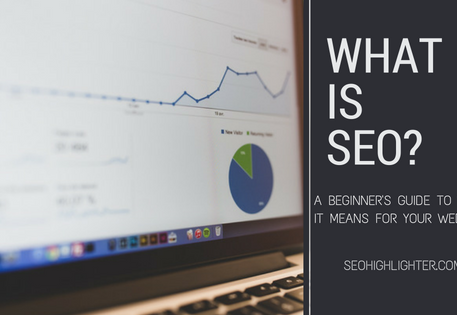What is SEO? Search Engine Optimization
What is SEO? A beginner’s guide to what that means for your website.
What is SEO, exactly? In this digital age, the success of your business largely depends on its positive online presence. How are you creating a word for your brand and what are you doing to reach out to your potential customers online? These are some serious questions to consider if you want your business to grow and flourish.
Most people turn to the internet to look for information that will inform their purchasing choices and on an average of 3.5 billion searches happen per day (Google search statistics). When so many people are out there looking for so many things, how will they find out about you? Where will they encounter your business? How will they hear you over the noise of your competition?
SEO Definition
The answer is SEO. SEO means Search Engine Optimization, and it is the practice of optimizing your website to reach a higher rank in search engines like Google or Yahoo. What that means is that you can curate your website in such a way that it receives a high quantity of quality traffic through organic search engine results.
1) Optimized Content:
The most important aspect of a good SEO rating is a good content strategy. Having high-quality content on your website that is both meaningful and relevant is the key to brand communication. You can explore different types of content and content formats to find what fits your brand message better. Blogs have become the most important form because they help you create fresh and frequent content that is both original and populated with relevant keywords.
After all, SEO is the game of keywords.

Keywords are basically words that your customers are most likely to use in their searches. With the right keywords, you can catch their pulse and that can bring up your ranking without any additional effort. However, populating your website and blogs with popular keywords isn’t the only way of driving your SEO and it’s certainly not the most intelligent way too.
Longer tail keywords or key phrases are slightly longer but are more specific in nature – of course, they translate into less traffic but usually leads to a higher chance of a conversion. These key phrases, when used smartly, gives context your content and gives you an edge over your competitions.
2) Optimized Design:
Just like SEO optimized content, the images on your website should also be optimized in terms of size, format and quality. It’s not just about adding good images, you also need to insert the relevant alt tags and description tags so the search engines can locate them easily.
In a way, your images and videos are also a type of content and contribute to the overall aesthetics of your website. A website that looks good in terms of design – from the logo to the color palette, offers a seamless experience for its audience. That’s what urges them to continue exploring the website and stay there long enough to begin an interaction with you.
3) Optimized Website:
Users these days are highly impatient and are least likely to spend more than 10 seconds on a website that won’t load instantly. It’s an important factor for Google rankings, as faster loading sites usually appear first in searches. Slow pages lead to a disappointing user experience and no level of good content can change it.
You can check the speed of your website with Google’s PageSpeed Insights which analyzes your web pages and offers free suggestions to make them faster. There are numerous other resources too that can help you with this or you can seek help from SEO experts who will be able to assist you better. Apart from site loading speed, another thing to keep in mind is that your website should be responsive, interactive, engaging and mobile friendly.
If you are investing time and money in creating and developing a website, it makes sense to dedicate some resources to your website SEO as well.
After all, what’s the point of it all if no one ever gets to read it?
